Bún măng vịt (Vietnamese duck noodle soup with bamboo shoots) is one of the most well-loved delicacies in Vietnamese cuisine. This mouth-watering dish combines tender duck, aromatic bamboo shoots, and a deeply flavorful broth.
Today’s easy-to-follow recipe ensures that even novice cooks can successfully recreate this sumptuous and inviting Vietnamese soup. So why wait?
Explore the flavors of bún măng vịt and watch as it becomes a new favorite among family and friends!
Why Bún Măng Vịt Is a Must-Try?
Bún măng vịt is an addicting noodle soup that can be found in various regions across Vietnam, particularly in the Mekong River Delta and Northern areas.
According to folk medicine, duck meat has cooling properties, making it a great choice for hot summer days. However, it’s essential to incorporate warming herbs and spices such as ginger, garlic, and Vietnamese coriander (laksa leaves) to make the dish more balanced.
The combination of tender duck meat dipped in ginger-infused fish sauce, accompanied by a bite of dried bamboo shoots, creates a beautiful harmony of sweetness and enticing aroma.
What Are the Vital Tools for Cooking Bún Măng Vịt?
First, let’s take a look at the tools you need to pull off this recipe. Double-check your kitchen arsenal to ensure that you have all of them.
Additionally, you might need other supporting tools like a saucepan, a slotted spoon, etc.
What Ingredients Do You Need to Prepare Bún Măng Vịt?
Create an authentic Vietnamese noodle soup by gathering these essential ingredients. Duck meat, bamboo shoots, and vermicelli noodles are the most important components.
What Are the Detailed Directions for Bún Măng Vịt?
Follow these 9 straightforward steps to create a Vietnamese duck noodle soup with bamboo shoots:
Step 1: Prepare the Ingredients
First, wash all the vegetables thoroughly and let them drain.
For the dried bamboo shoots, prepare them ahead of time as they need to be soaked in warm water for 2-3 hours to soften. While soaking, rinse and change the water 2-3 times to reduce the yellow color and clean the bamboo shoots further.
Clean the duck by rubbing it with salt, then rinse it with alcohol and vinegar to sanitize and reduce any strong odors from the duck.
Step 2: Roast the Vegetables
Roast the ingredients below in an oven for 15 minutes at 400 degrees F.
Thinly slice the cabbage and ½ onion. Soak the onion in cold water to reduce its pungent taste.
Step 3: Boil the Bamboo Shoots
After preparing the ingredients, add the bamboo shoots to a pot of water and boil them for 60 minutes at medium heat.
During this process, change the water 3 times to keep the bamboo shoots clear and reduce any strong odors.
Step 4: Boil the Duck
Add 3 tablespoons of white wine and 2 teaspoons of salt to a pot of boiling water. Blanch the duck for 2 minutes. Then, take the duck out and rinse it clean.
Add 3.5 quarts of bone broth to a pot along with the scallions, roasted onion, ginger, and shallots. Bring to a boil and cook the duck for 25 minutes.
Step 5: Stir-fry the Bamboo Shoots
While boiling the duck, shred the bamboo shoots into small strands. After shredding, sauté garlic and shallots until fragrant, then add the bamboo shoots to the pan.
Next, add 1 tablespoon of broth to prevent burning, and season with 3 tablespoons of fish sauce. Stir-fry for 2-3 minutes to let the bamboo shoots absorb the flavors.
Step 6: Prepare the Broth
Once the duck is tender, remove it along with the other ingredients from the pot. Add the stir-fried bamboo shoots to the broth pot.
Boil for 5-10 minutes on low-medium heat. Then, season with rock sugar, salt, and chicken seasoning powder, adjusting to your preferred taste.
Step 7: Slice the Duck and Blanch the Noodles
Once the duck has cooled, slice it thinly. You can save the duck drumsticks to add more visual appeal to the dish.
Blanch the vermicelli noodles in boiling water for 30-40 seconds and transfer them to a bowl.
Step 8: Prepare the Dipping Sauce
In a small bowl, mix and stir well:
Step 9: Finish and Serve
Arrange the duck meat and bamboo shoots on top of the noodles. Pour the broth over the noodles until they are submerged. Then, garnish with scallions, cilantro, laksa leaves, ground pepper, fried shallots, and some chili slices.
You can also serve the dish with chili sauce, satay, and chili-lime sauce for an exciting twist.
Key Notes for Making Delicious Bún Măng Vịt
Here are some notes that you should keep in mind during the cooking process. If you’re new to cooking duck and bamboo shoots, they will surely come in handy.
How to Store Bún Măng Vịt for Later?
To store Vietnamese duck noodle soup with bamboo shoots, first let the soup cool to room temperature. Then, separate the soup, noodles, duck, and bamboo shoots, placing them into individual airtight containers.
Refrigerate the containers if you plan to consume the soup within 2-3 days.You can also freeze the soup, duck, and bamboo shoots for up to 3 months.
Avoid freezing the noodles, as they will become mushy when thawed. Remember to label and date the containers for easy tracking.
When ready to serve, reheat the components separately, cook fresh noodles or reheat cooked ones, and combine everything in a serving bowl. Garnish with your choice of toppings, and enjoy!
Different Variations of Bún Măng Vịt to Try Out
In addition to the original recipe, there are also some ways to customize this dish to suit individual preferences or dietary requirements. Check out the following variations.
Enhance Your Meal with Bún Măng Vịt
As you’ve learned, this soup can be easily customized with different ingredients and garnishes, making it a versatile meal for many occasions. The health benefits of bamboo shoots, as well as the availability of various noodle types, also add to the dish’s appeal.
If you enjoyed learning about Vietnamese duck noodle soup with bamboo shoots, please consider liking and sharing this article. Your thoughts, experiences, and feedback are always welcome, so feel free to leave a comment below. Thank you, and happy cooking.
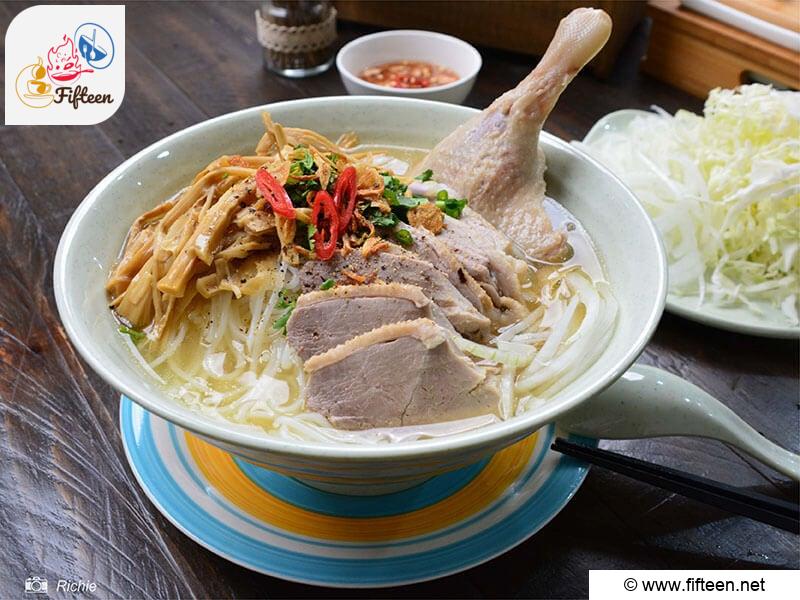
Bún Măng Vịt Recipe (Vietnamese Duck Noodle Soup With Bamboo Shoots)
Equipment
- Pot
- Pan
- Ladle
- Tongs
- Knife
- Chopping Board
Ingredients
- 2.5 pounds duck
- 5.3 ounces dried bamboo shoots
- Roasted onion
- Roasted shallot
- Roasted ginger
- 1 scallion
- 3 tablespoons white wine
- 2 teaspoons salt
- 3.5 liters of pork bone broth
- 1.1 pounds vermicelli noodles
- 0.5 ounces minced shallots
- 0.5 ounces minced garlic
- 3 tablespoons fish sauce
- Cooking oil
Accompanying vegetables
- Chopped scallions, cilantro, laksa leaves
- 0.5 sliced onion
- 0.44 pounds thinly sliced white cabbage
- 0.5 ounces fried shallots
Seasonings for the broth
- 3 teaspoons chicken seasoning powder
- 3 teaspoons salt
- 0.9 ounces rock sugar
Dipping sauce
- 5 tablespoons fish sauce
- 2 tablespoons sugar
- Juice of half a lime
- 0.7 ounces crushed ginger
- A few chili slices
Instructions
- First, wash all the vegetables thoroughly and let them drain. For the dried bamboo shoots, prepare them ahead of time as they need to be soaked in warm water for 2-3 hours to soften. While soaking, rinse and change the water 2-3 times.Clean the duck by rubbing it with salt, then rinse it with alcohol and vinegar.
- Roast 1 onion (cut in half), 1 ginger root, and 2 shallots in an oven with a bowl of water for 15 minutes at 400℉.
- Thinly slice the cabbage and ½ onion. Soak the onion in cold water to reduce its pungent taste.
- Add the bamboo shoots to a pot of water and boil them for 60 minutes at medium heat. During this process, change the water 3 times.
- Add white wine and salt to a pot of boiling water. Blanch the duck for 2 minutes. Then, take the duck out and rinse it clean.
- Add the bone broth to a pot along with the scallions, roasted onion, ginger, and shallots. Bring to a boil and cook the duck for 25 minutes.
- While boiling the duck, shred the bamboo shoots into small strands. After shredding, sauté garlic and shallots until fragrant, then add the bamboo shoots to the pan. Next, add 1 tablespoon of broth to prevent burning, and season with fish sauce. Stir-fry for 2-3 minutes to let the bamboo shoots absorb the flavors.
- Once the duck is tender, remove it along with the other ingredients from the pot. Add the stir-fried bamboo shoots to the broth pot. Boil for 5-10 minutes on low-medium heat. Season with rock sugar, salt, and chicken seasoning powder, adjusting to your preferred taste.
- Once the duck has cooled, slice it thinly. Save the duck drumsticks to add more visual appeal to the dish.
- Blanch the vermicelli noodles in boiling water for 30-40 seconds and transfer them to a bowl. Mix fish sauce with sugar, lime juice, crushed ginger, and a few slices of chili in a small bowl and stir well.
- Arrange the duck meat and bamboo shoots on top of the noodles. Pour the broth over the noodles until they are submerged. Garnish with scallions, cilantro, laksa leaves, ground pepper, fried shallots, and some chili slices. Enjoy!
Video
Notes
- The total time listed above is for making 4 servings.
- Duck has a strong, gamey smell, so clean it thoroughly. Additionally, you can soak the duck in 1 quart of water mixed with 3 tablespoons of vinegar for 30 minutes to reduce the odor and tenderize the meat faster.
- Dried bamboo shoots have a strong and pungent smell. Make sure to prepare both the duck and bamboo shoots carefully to maximize the dish’s flavor.
- After 25 minutes of boiling, poke the duck using a chopstick or a fork to check its doneness. If there’s no pink liquid coming out, the duck is cooked through. Otherwise, cook the duck for 5 more minutes.


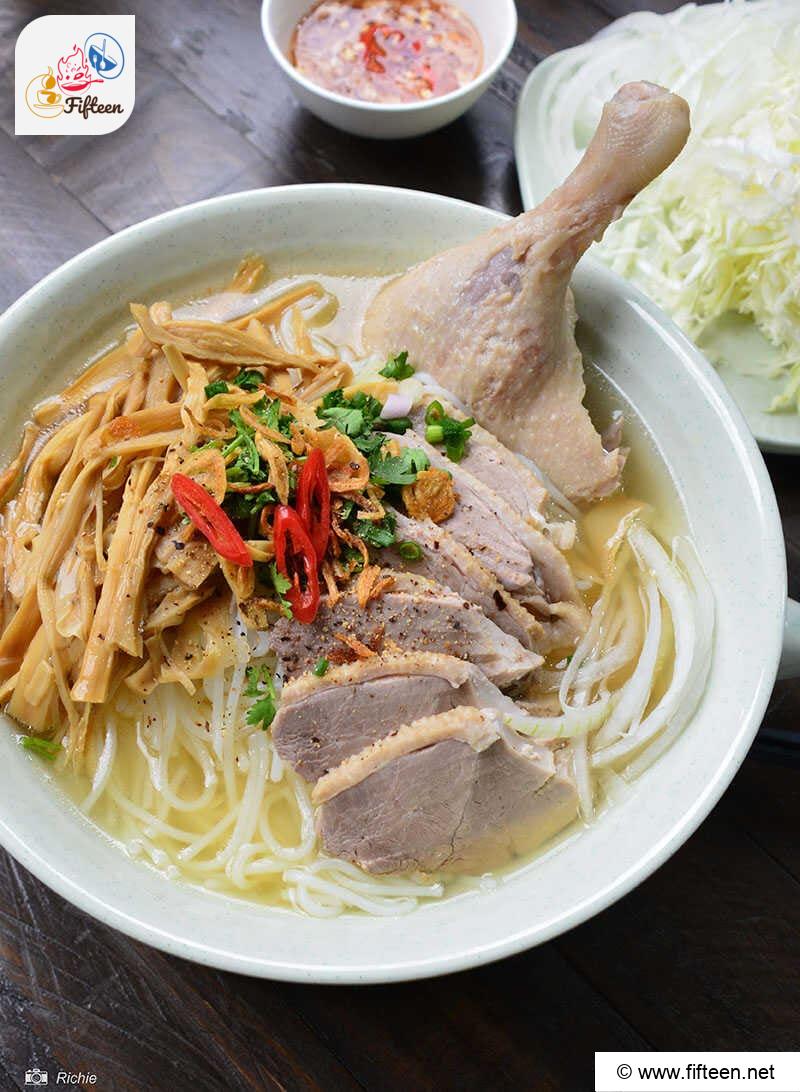
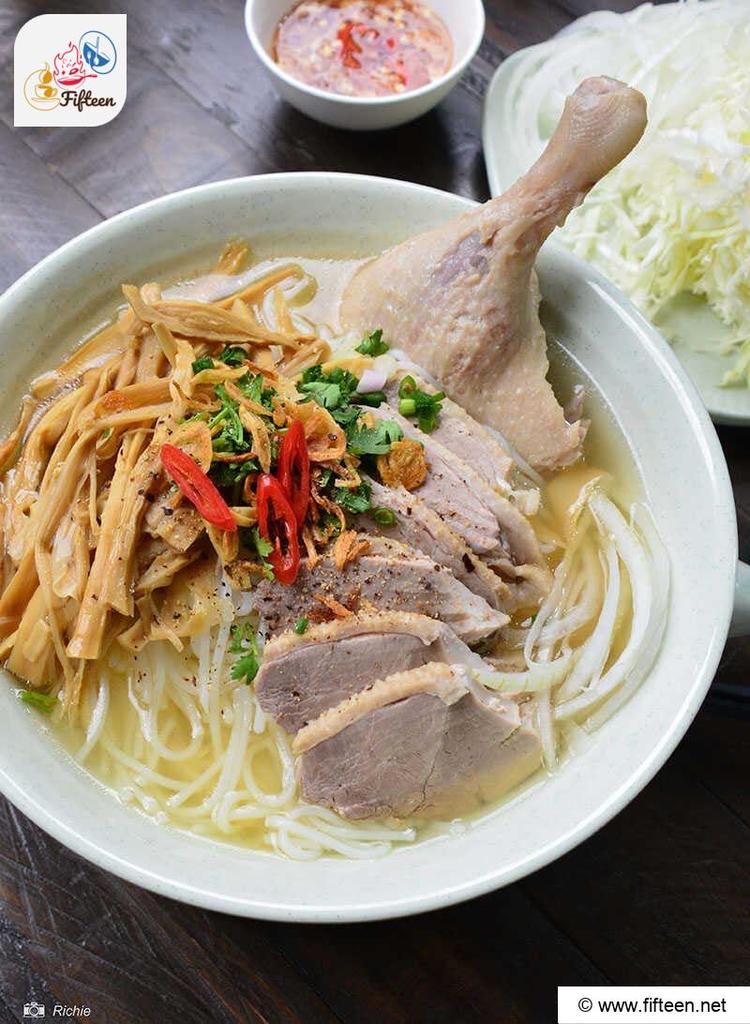
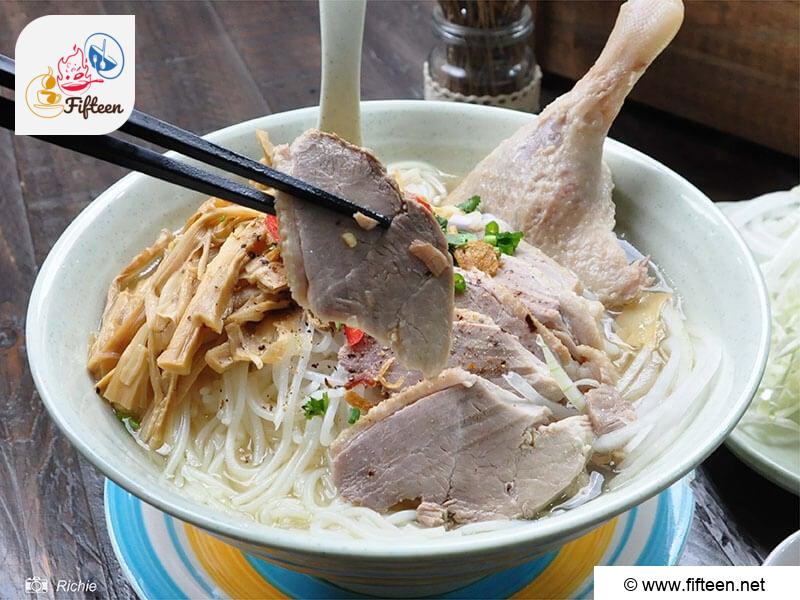
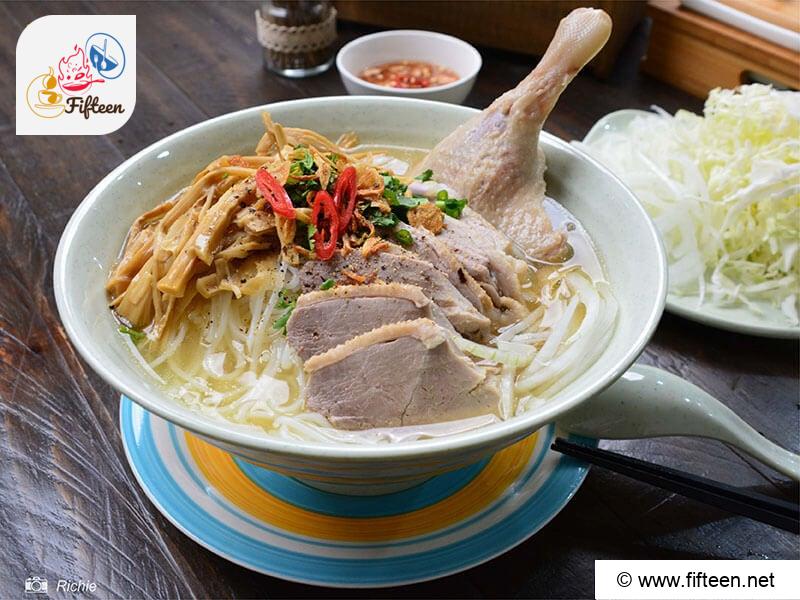
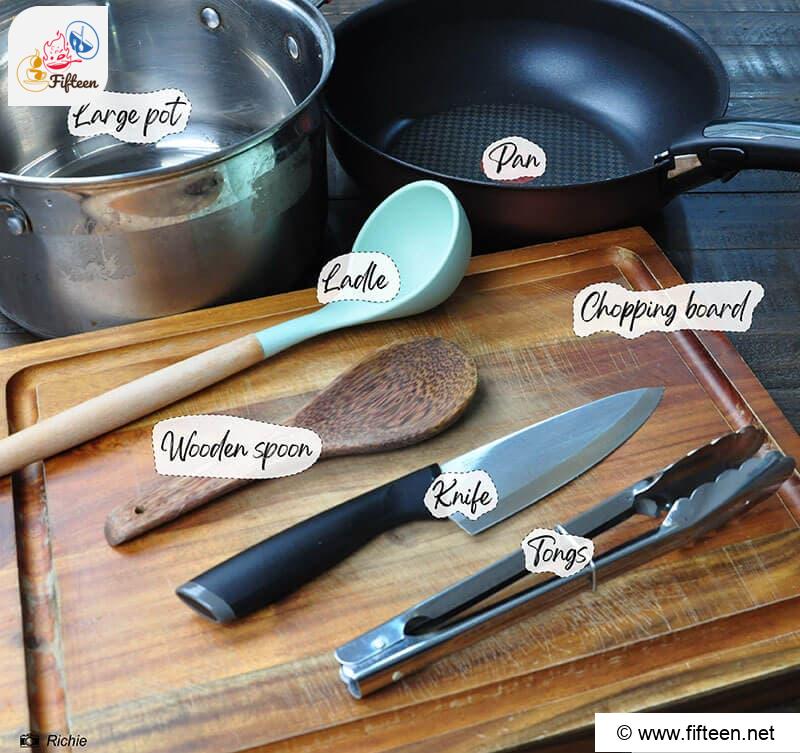
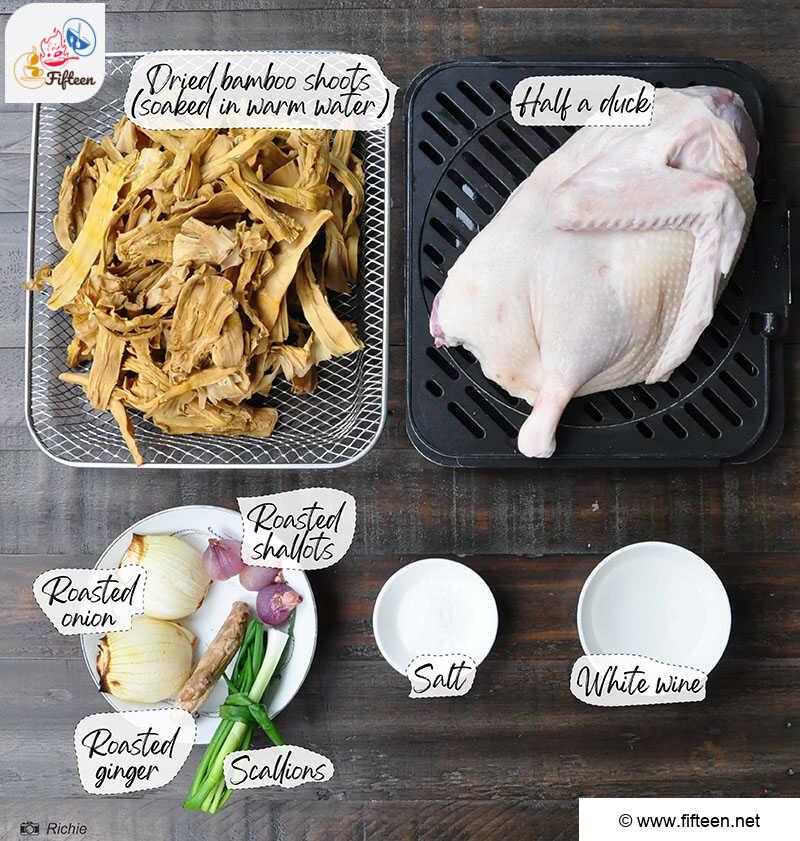
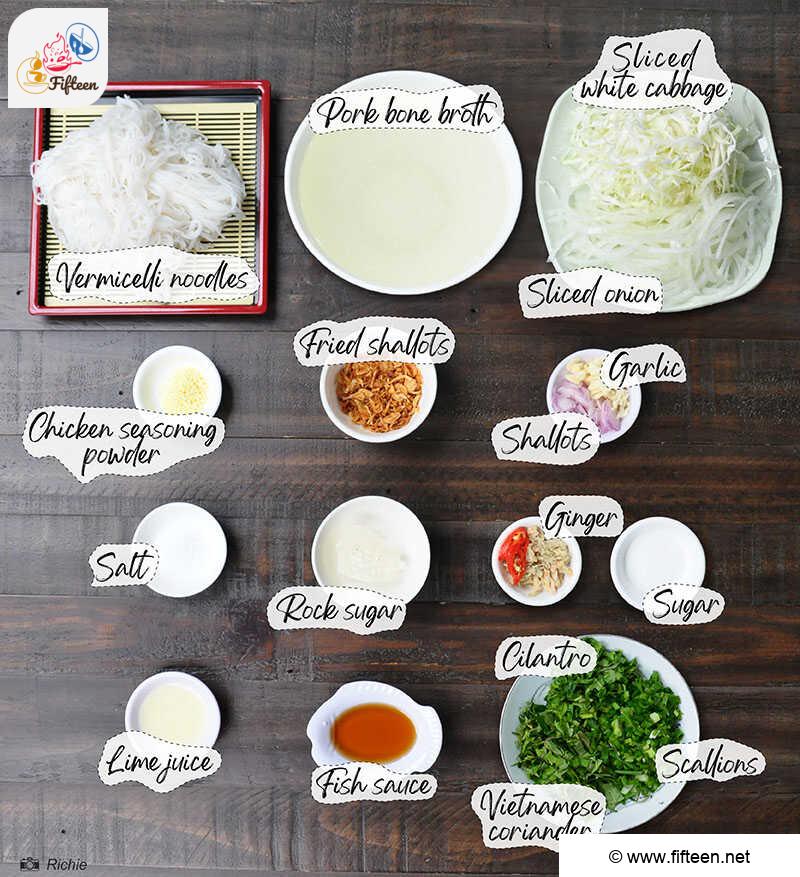
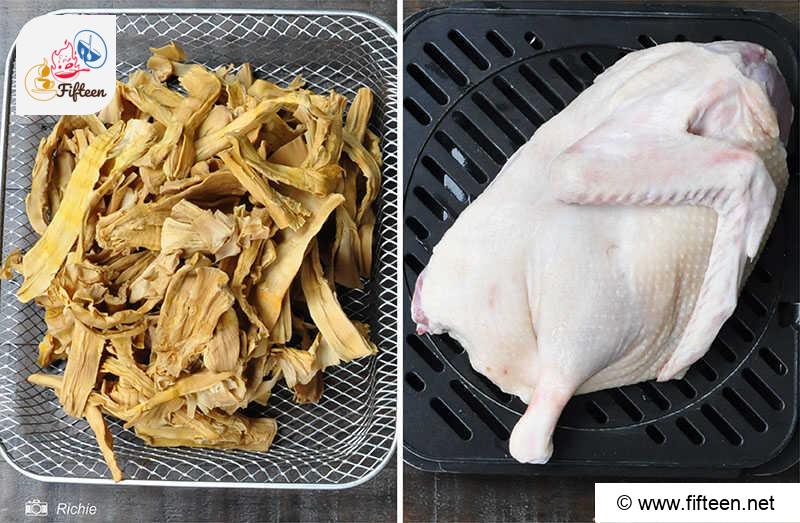
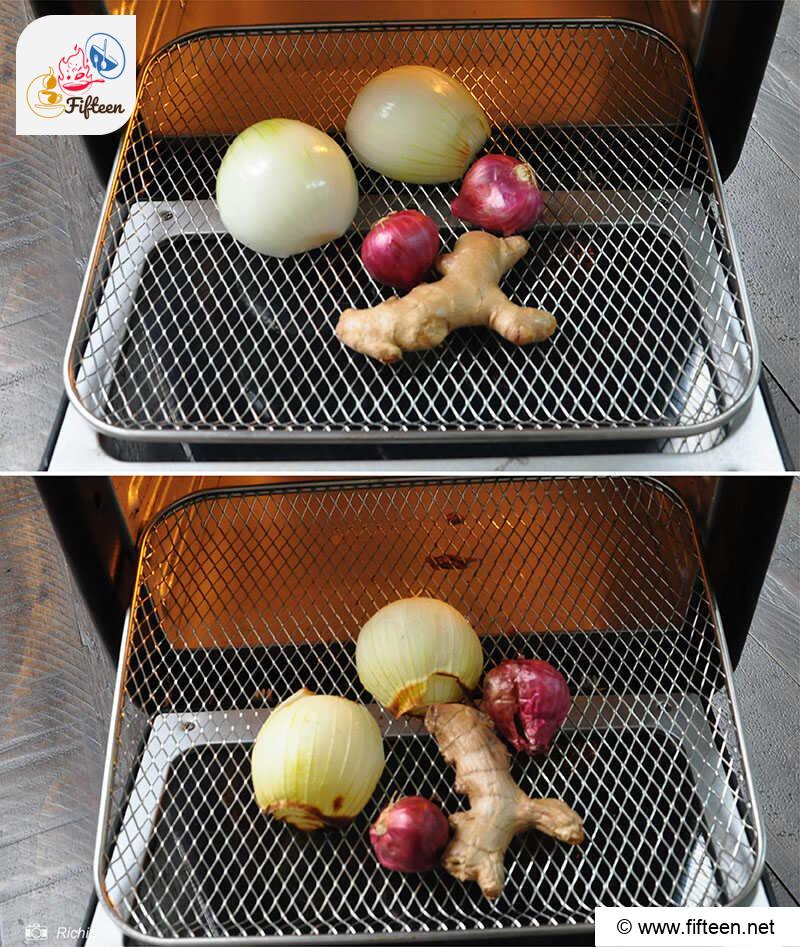
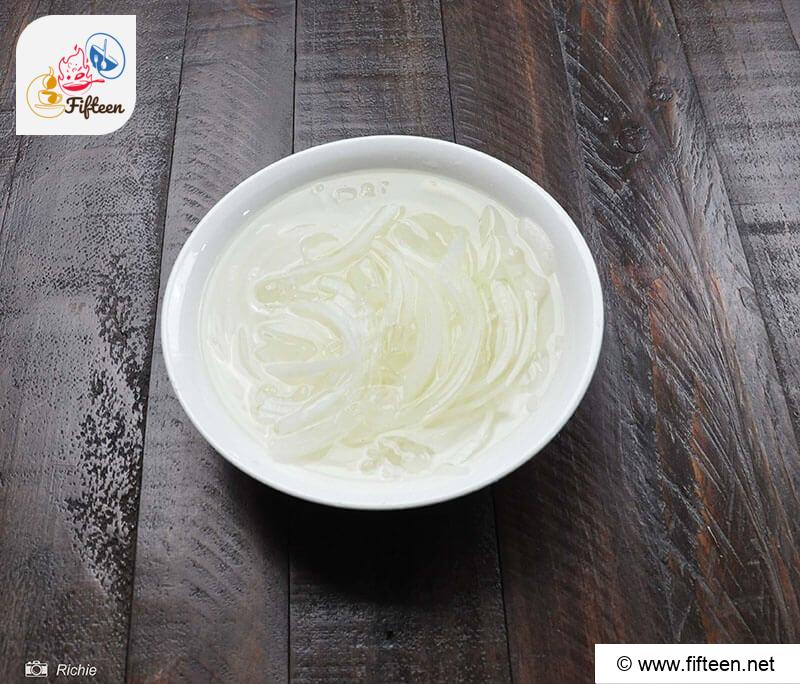
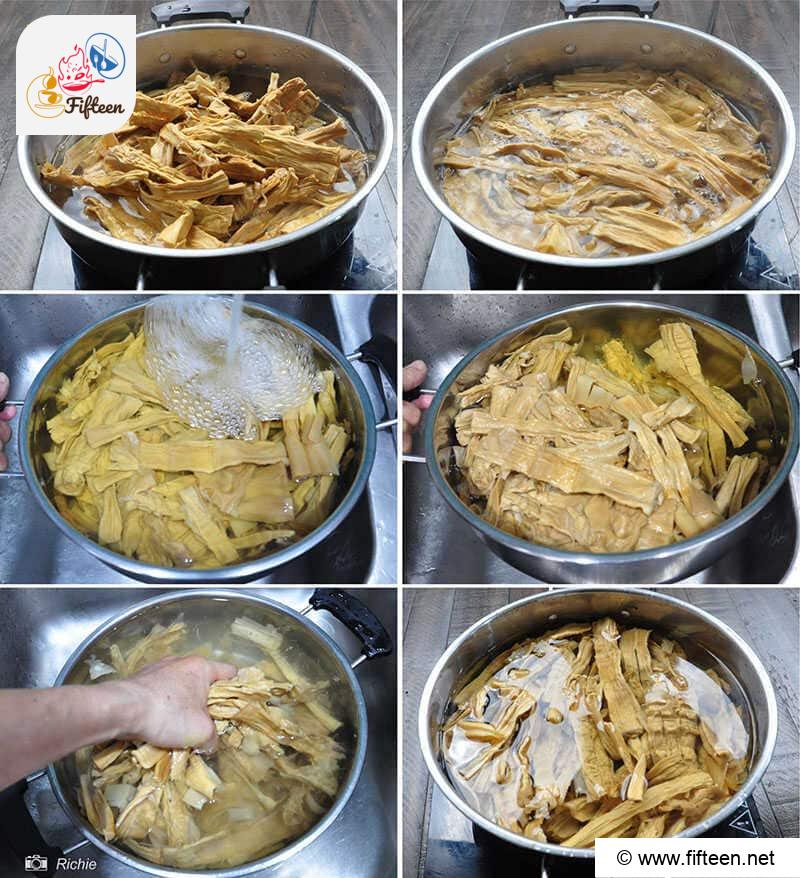
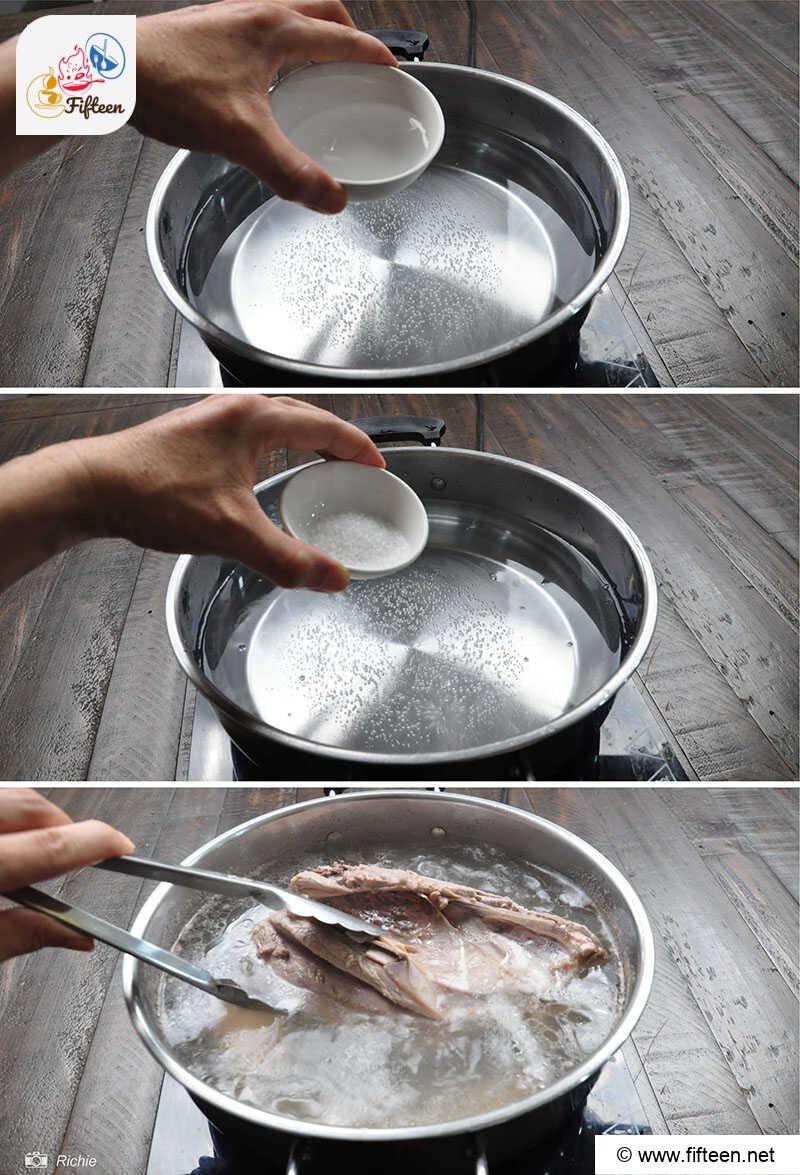
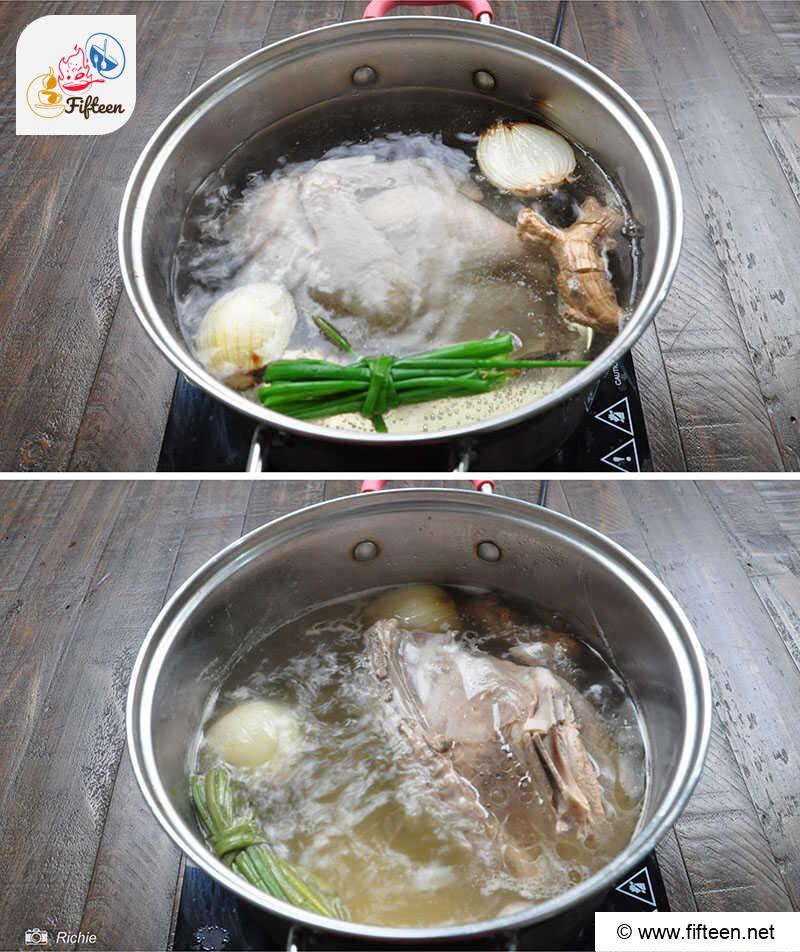
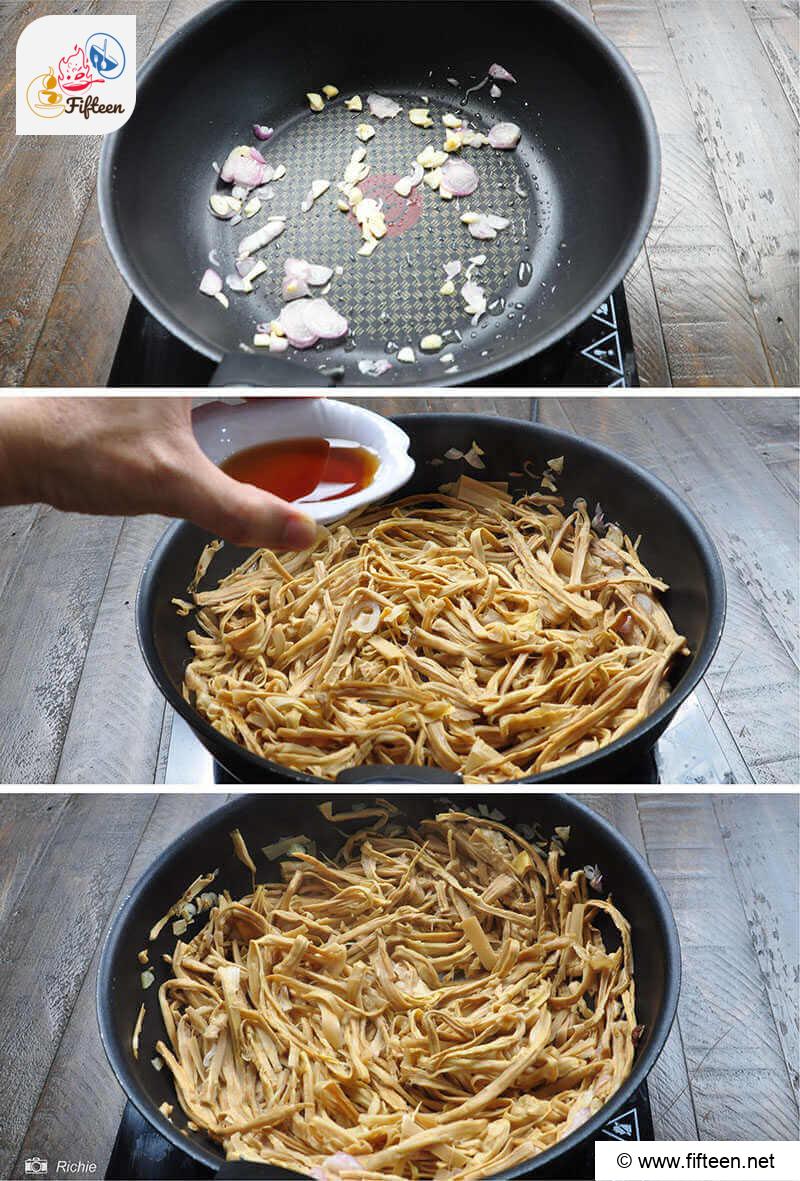
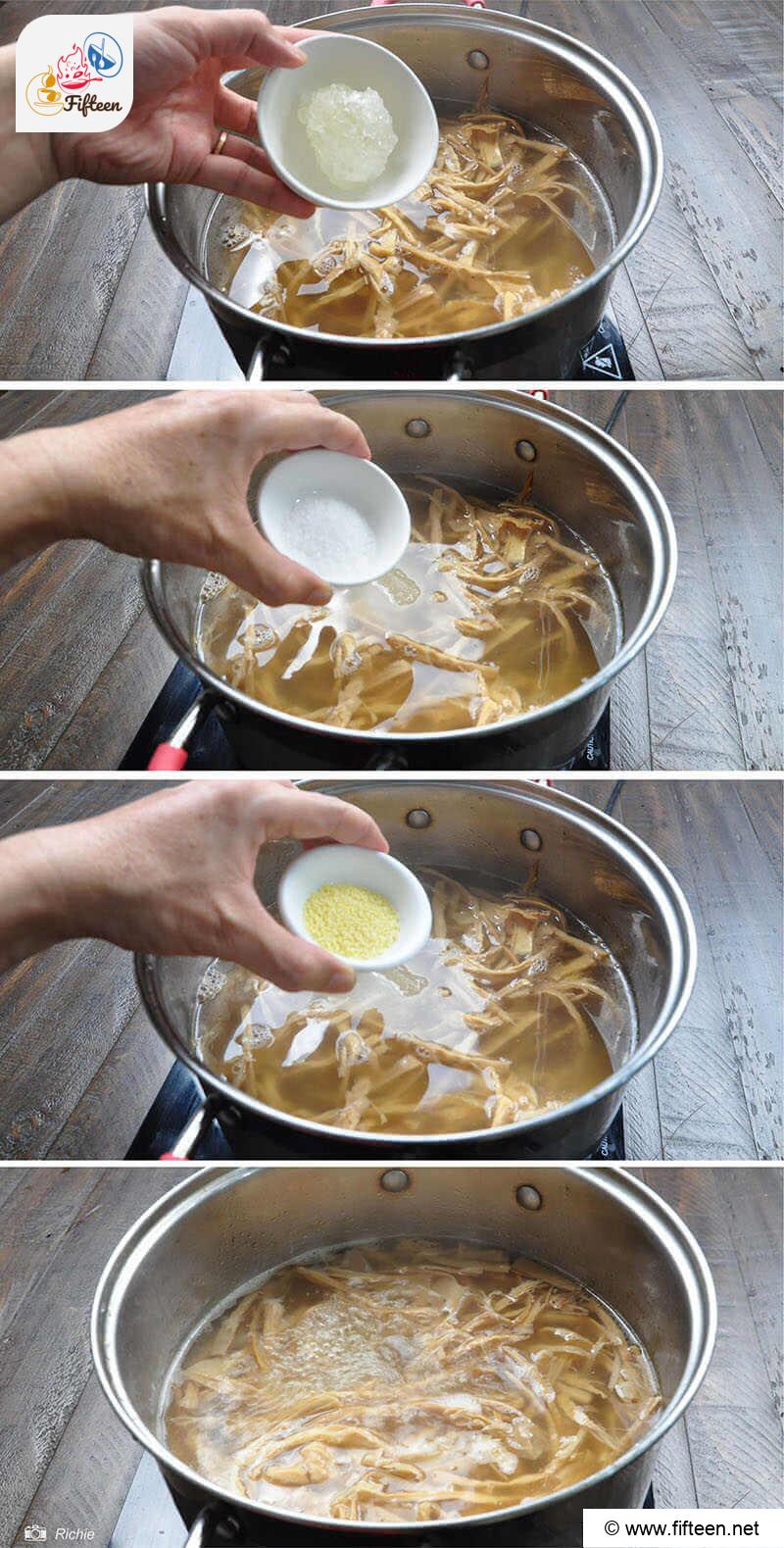
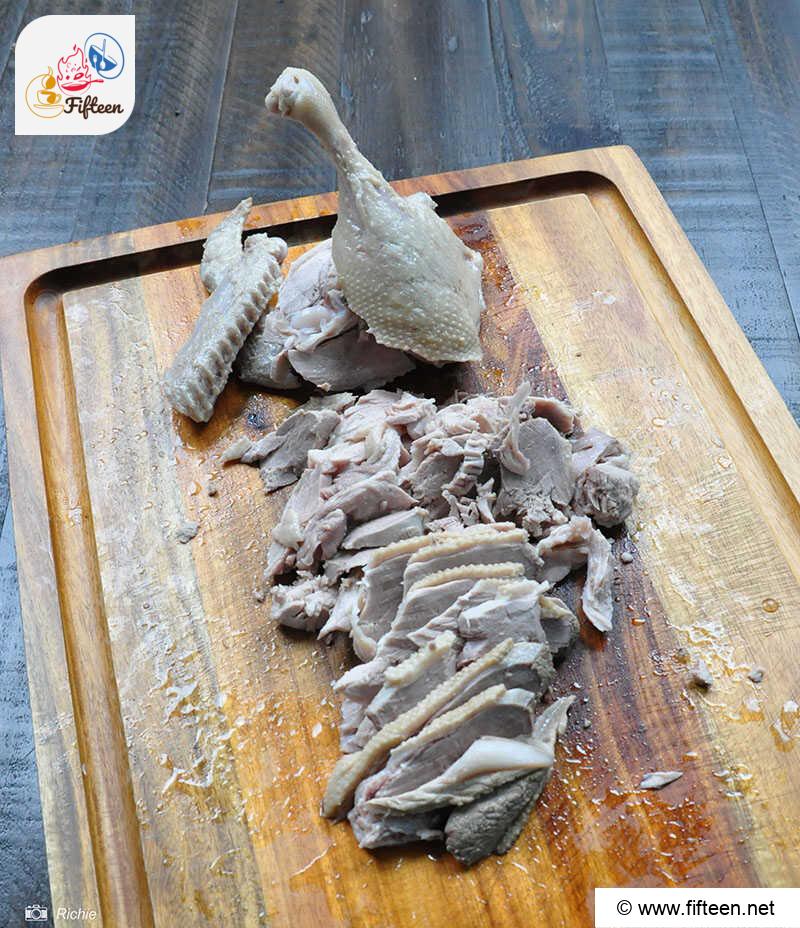
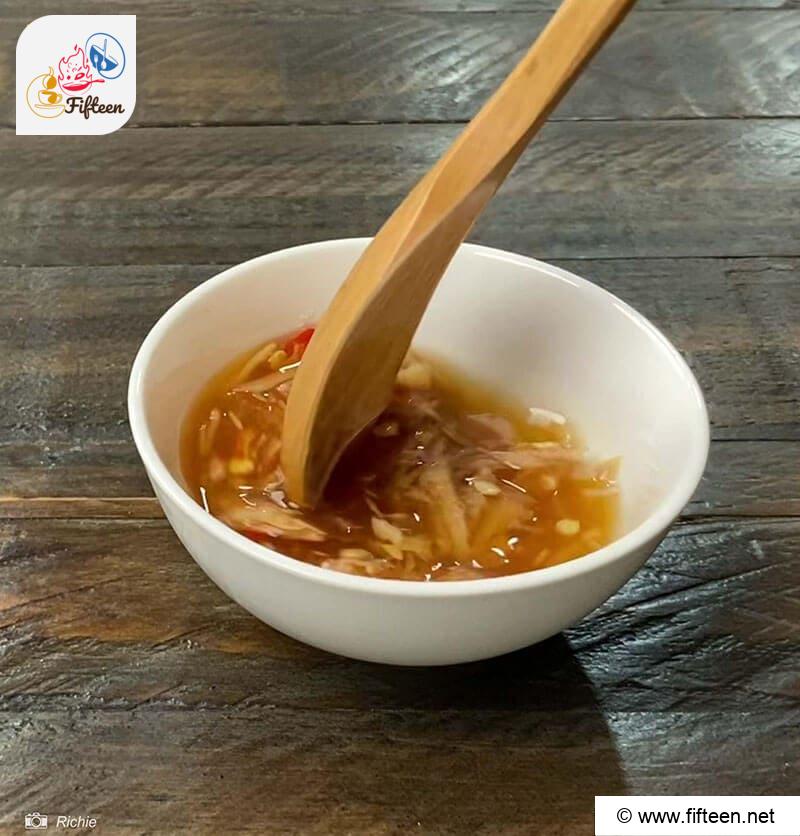
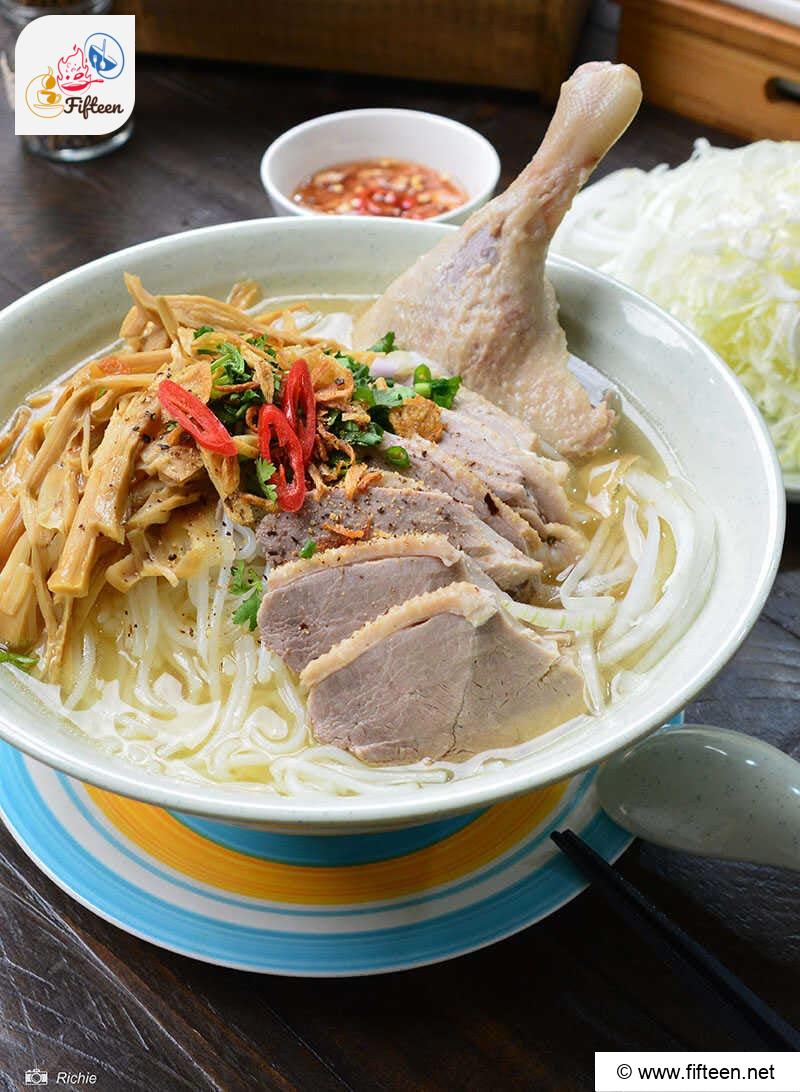
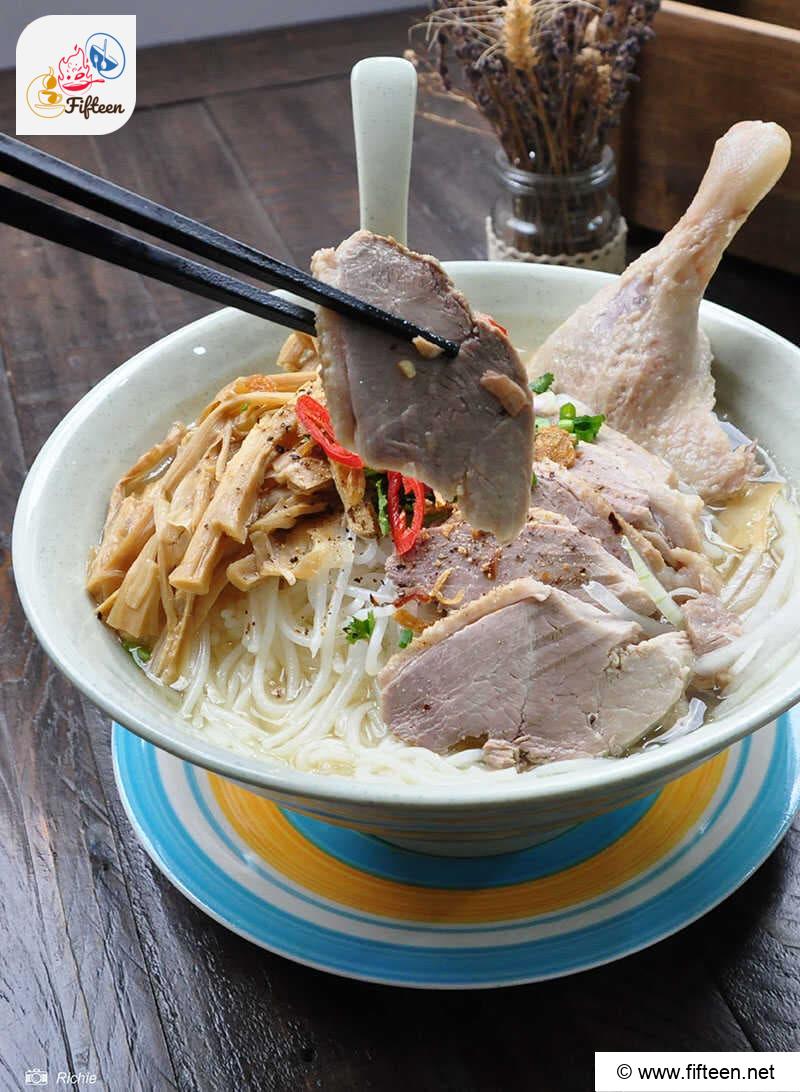
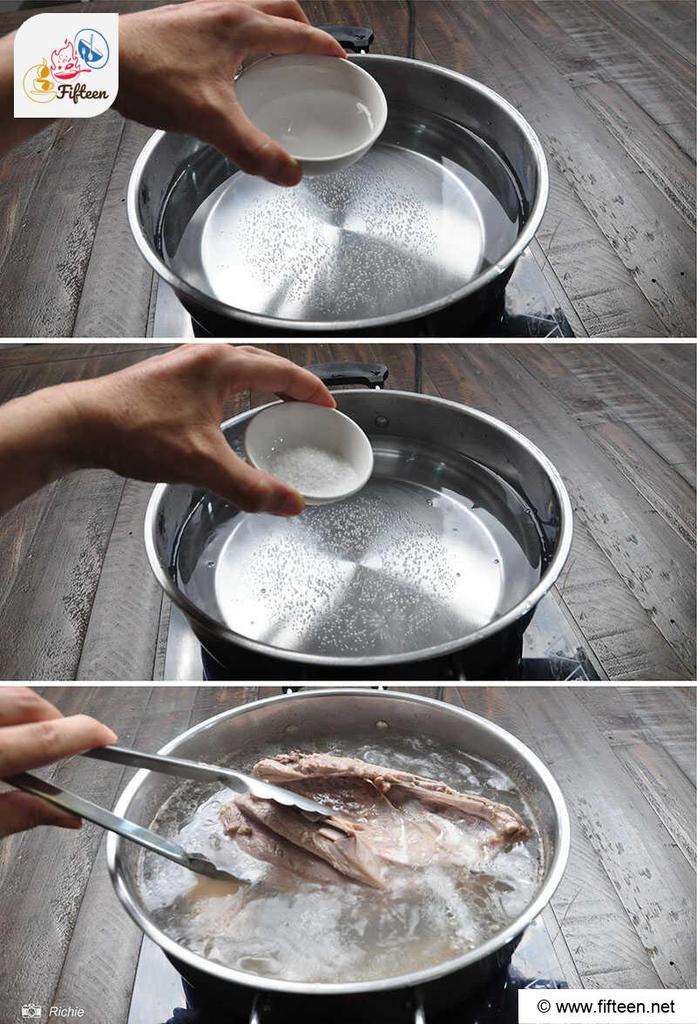
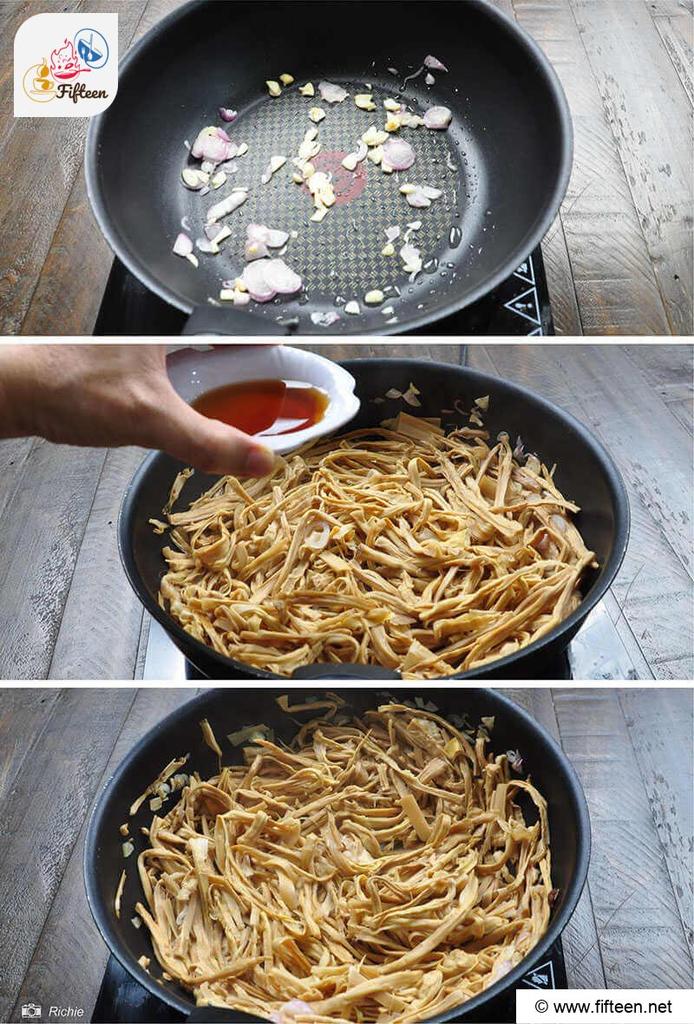
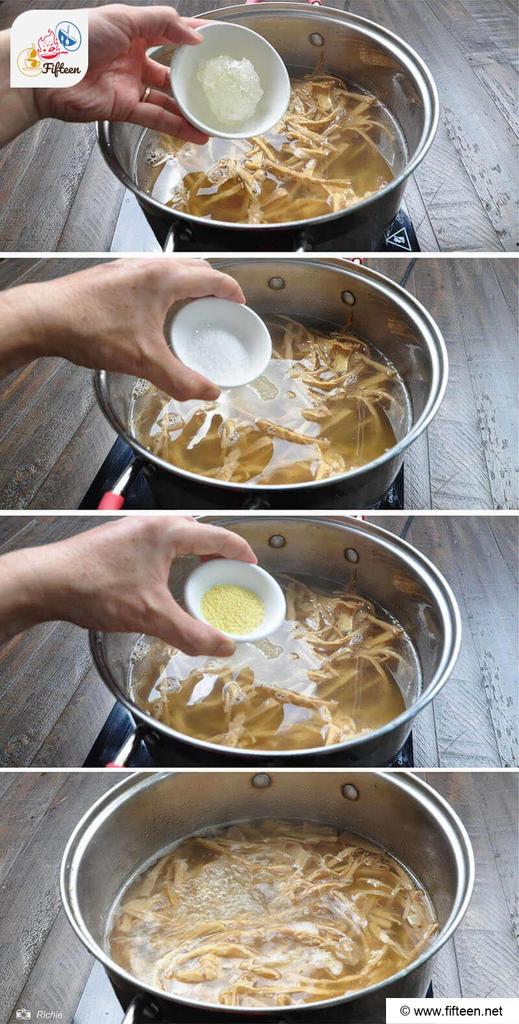
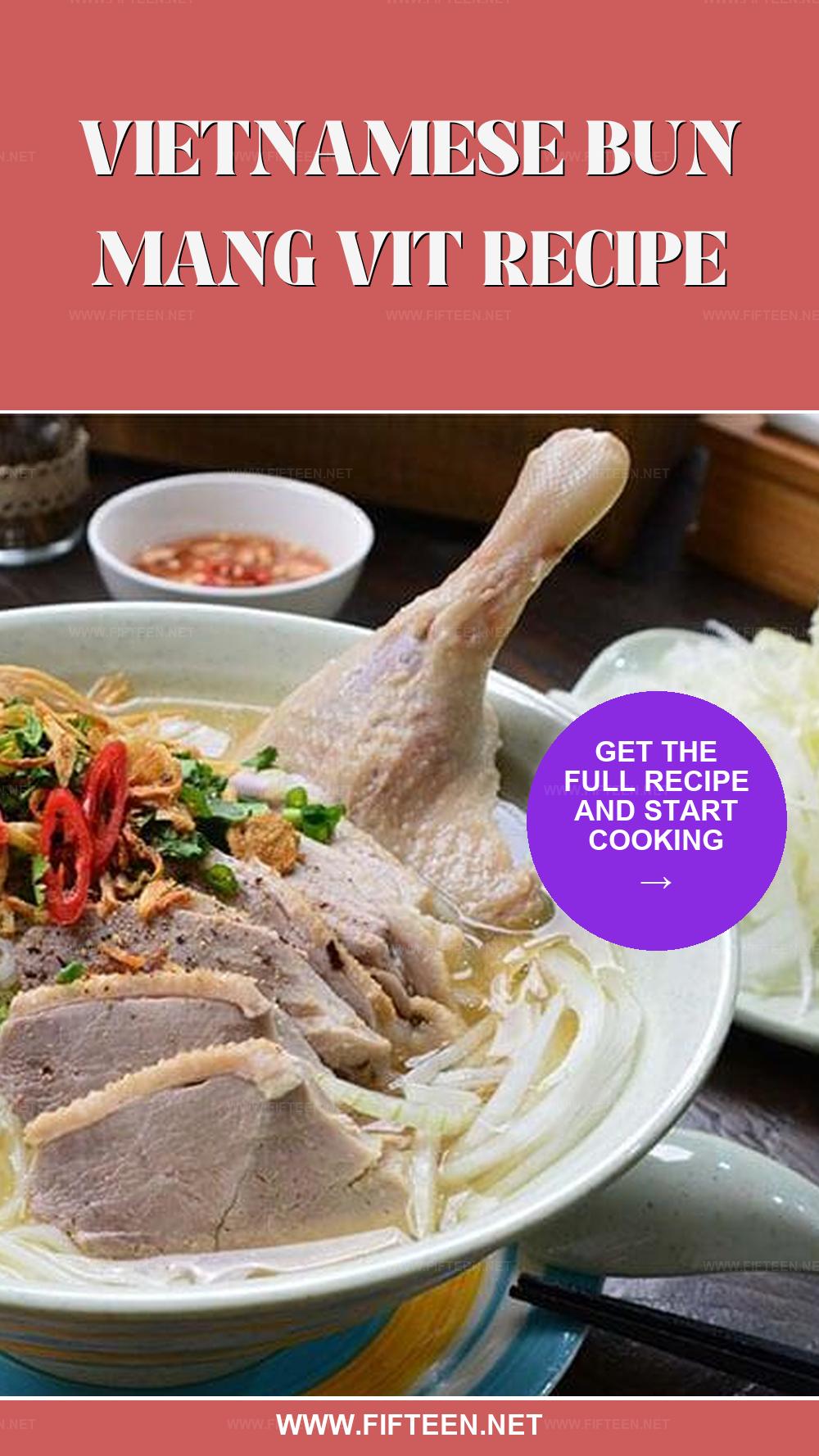
Richie
Content Writer
Expertise
Home Cooking, Meal Planning, Food Styling, Food Photography, Cooking-video Maker, Beverage Evaluation Expert
Education
Saigon Culinary Arts Centre, Ho Chi Minh City, Vietnam
Vietnam Australia Vocational School (VAAC), Hanoi, Vietnam
Richie, based in Ho Chi Minh City, Vietnam, is a dynamic Content Writer with a talent for capturing the essence of culinary art.
Richie specializes in creating visually appealing and tasty content, offering a new angle on Vietnamese and other culinary traditions. With a background in graphic design and a love for food styling and photography, he expertly combines beauty with food narratives, encouraging his audience to discover the culinary world through his imaginative perspective.